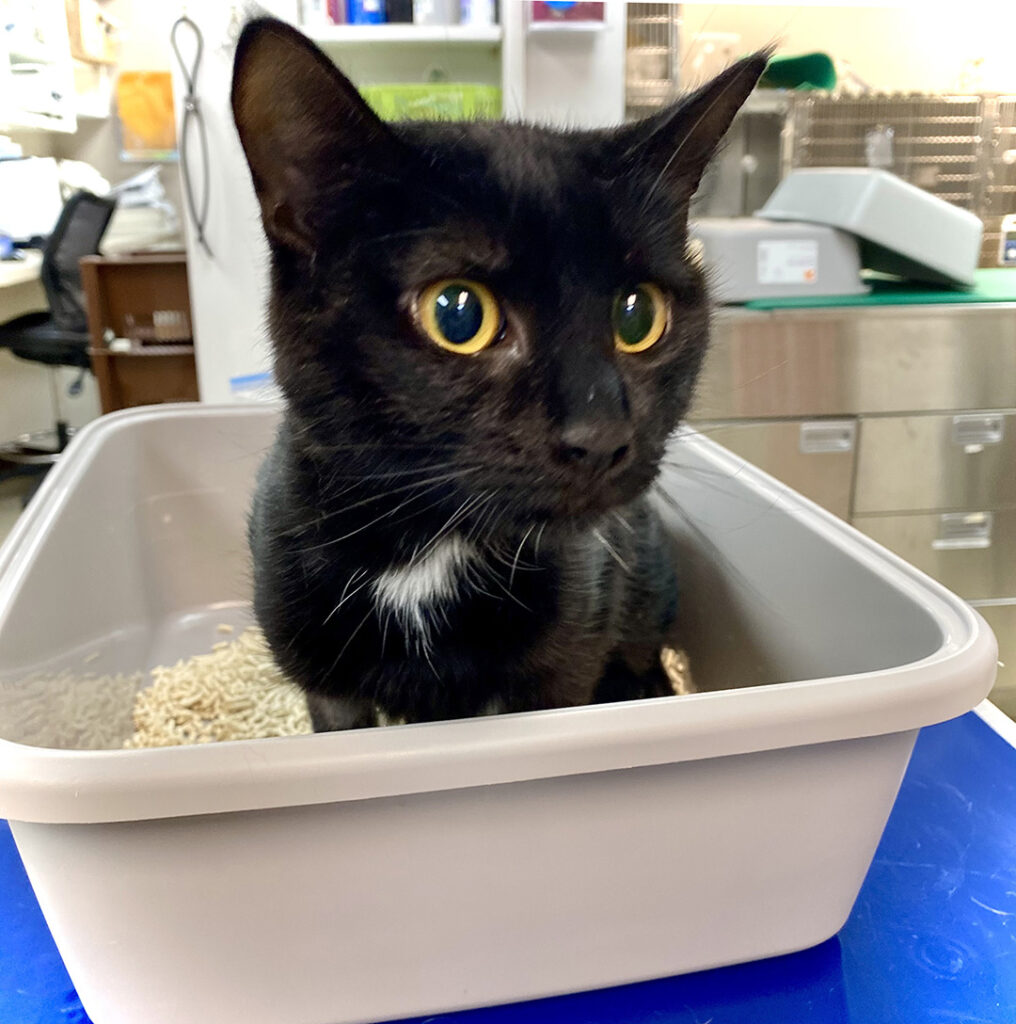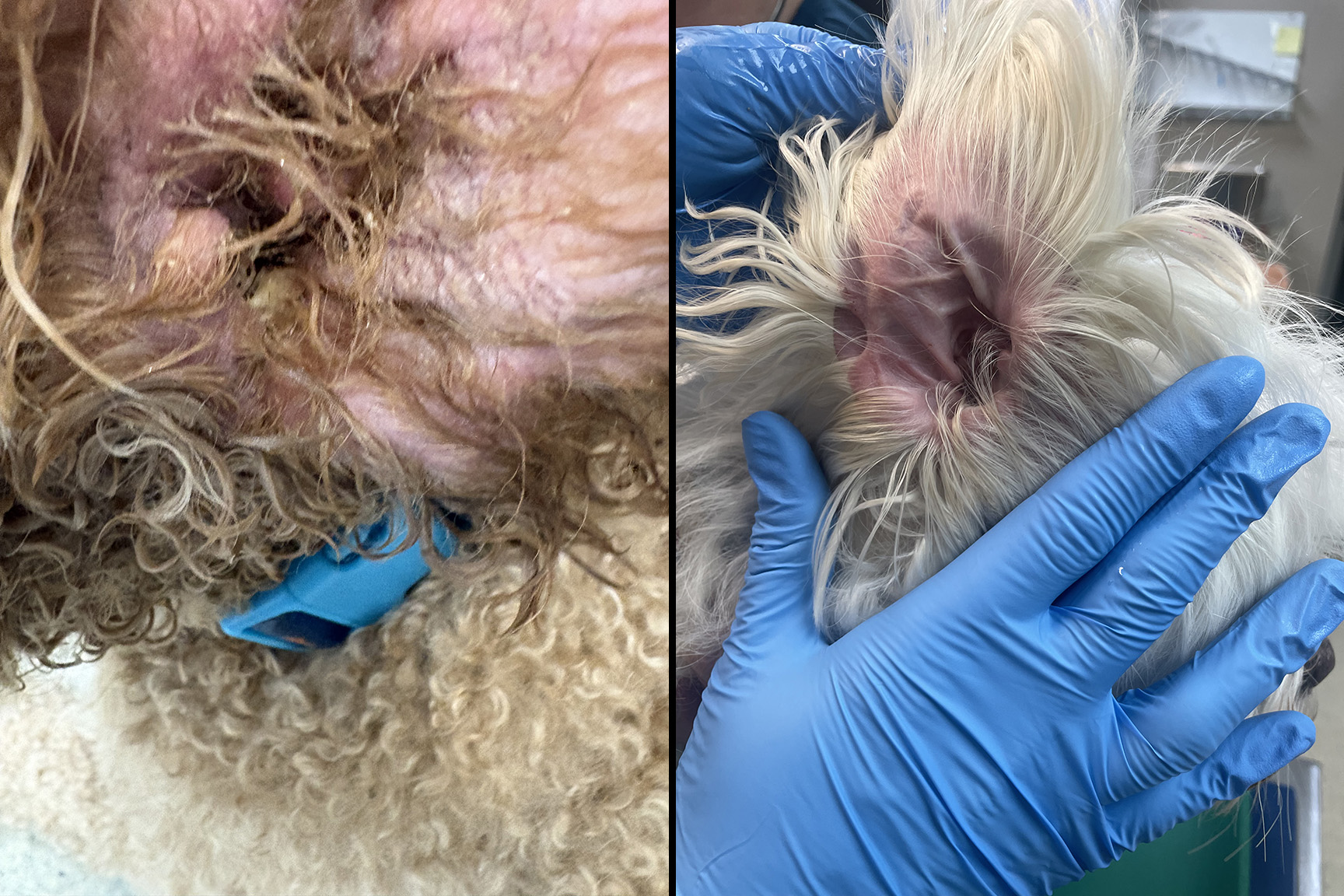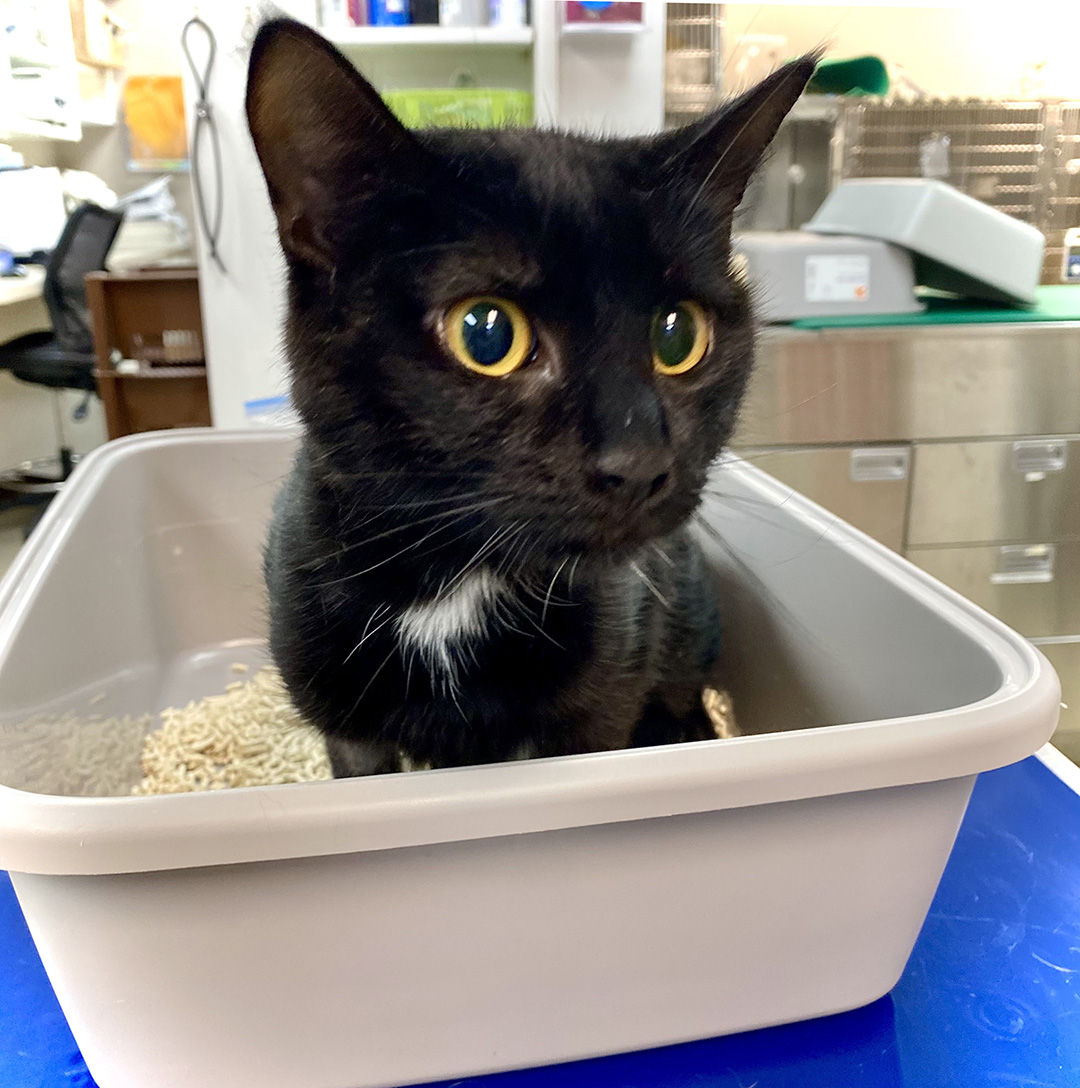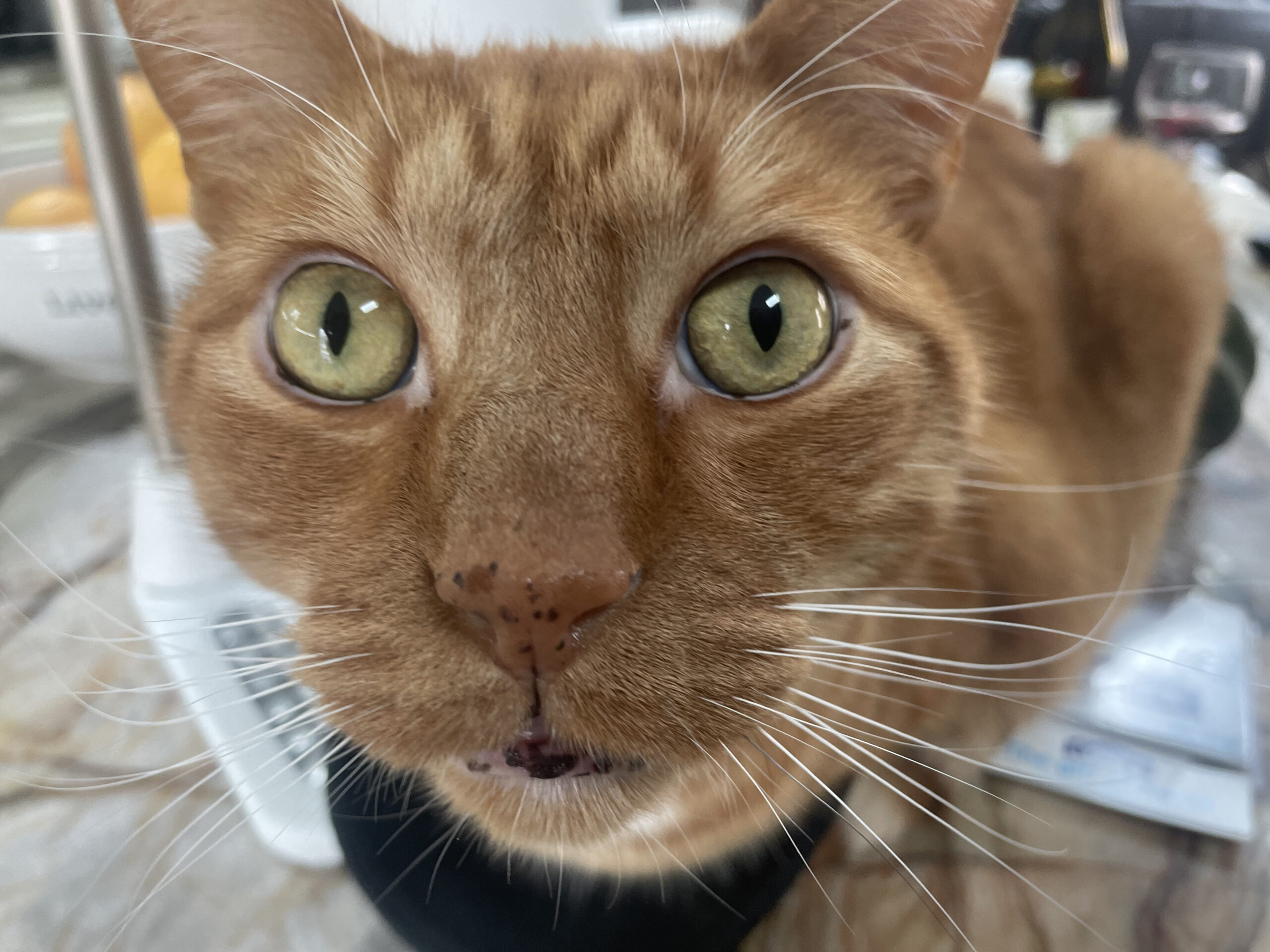The nitty gritty of kitty litter
A basic guide to supporting your cat’s urinary health
You love your cat and you undoubtedly share a special bond together. Exactly how much your feline friend reciprocates your love and affection may at times be questionable, but nonetheless, let’s take a minute to get to the kitty gritty of urinary health.
Here are some general recommendations you can do at home to help prevent urinary problems:
Litterbox care
It is important to have at least one more litterbox than the number of cats in the household and to keep them clean.
Be sure to use a large enough litterbox that allows for cats to stand up in and can get easily in and out of. Most commercial litterboxes are too small for the average size cat. Home made litterboxes made from a large storage bin can be easily made. Ask us for recommendations and suggestions if you need help.
Place litterboxes throughout the house in all of your cat’s favorite places preferably on each level of the house. Be sure to place them in a quiet area where your cat feels safe, not next to the front door, the water heater or the washer machine which may startle your cat. This is to encourage convenience so that your cat urinates as frequently as possible.
Water Intake
We want to encourage cats to drink and urinate as often as possible to help dilute the urine.
• Add extra water bowls around the house especially in your cat’s favorite areas of the house.
• Switch to all canned food or add some water to dry food.
• Try a kitty water fountain as some cats like running water.
Minimize stress
Stress in cats has been associated with the development of interstitial cystitis, or inflammation of the bladder. You may not recognize stressors in your cat’s life as kitty behavior can often be subtle. Some common stressors could be a new pet dog or cat in the house, visitors, construction in the house, the sight of outside cats, or even slight changes in your cat’s daily routine.
Provide them with safe places throughout the house. Cats love heights and often feel safe at higher levels. Provide them with a cat tree or perching areas.
Enrich their environment with various scratching posts and toys.
Urinary problems seen in cats include straining to urinate and urinating smaller amounts more frequently. This is often manifested by cats going in and out of the litterbox. Additional signs include bloody or cloudy urine, urinating outside the litterbox, vocalizing, and excessive grooming of the genital area.
Some cats will exhibit all of these signs while others will only show some signs. Both males and females may be affected. The most common cause for these signs in young cats is feline interstitial cystitis, FIC, which is sterile inflammation of the bladder where no infection is present so antibiotics will not help. Additional causes include bladder stones, urinary tract infection or UTI, and bladder tumors.
To further complicate things, male cats can become blocked and develop a urethral obstruction where they physically cannot urinate. Blocked cats will exhibit similar signs as mentioned above while struggling to pass little to no urine at all. This is a life-threatening condition and immediate veterinary care is required.
Contact Animal Hospital At Thorndale if your cat is exhibiting any of these urinary signs especially if there is concern for a urinary blockage. We will quickly determine if a urinary blockage is present or not. Should we find your kitty friend to have a blockage, treatment and hospitalization will be required and provided.
If a blockage is ruled out, testing to look for an underlying cause may include a urinalysis. We look for urinary crystals which can be suggestive of bladder stones, bacteria which is suggestive of a UTI and or white blood cells which is suggestive of inflammation. Additional testing may include x-rays to look for bladder stones, a urine culture for definitive UTI and/or an abdominal ultrasound to look for bladder tumors or growths.
Pain control is an important component of the treatment plan for cats with any of these urinary conditions as all of these are painful. Cats urinate outside the box at times because they associate it with pain.
Other treatments may be tailored to the underlying condition. For general and more cat basics, the Ohio State University Indoor Cat Initiative is a great resource.
We may recommend using pheromones such as Feliway which may help. Sometimes anti-anxiety prescription drugs are helpful whether in the short or long-term treatment plan.
A prescription diet is often recommended in cats with urinary signs. These are diets that can be obtained with a prescription only. Over the counter urinary diets are NOT recommended as there is no evidence that these diets are effective.



